The ferry to the Sunshine Coast, British Columbia, Canada
Head up on deck for the 40-minute crossing from the pretty cove of West Vancouver’s Horseshoe Bay to Langdale on British Columbia’s (BC) Sunshine Coast, so you can appreciate the views, the wildlife and your fellow travellers. The Sunshine Coast’s remoteness lends it an island feel, but it is part of BC’s mainland. The ferry crosses the glacier-carved Howe Sound, the only feasible way of reaching the area, bar seaplane. Keep your camera handy to snap the snow-sprinkled caps of the Coastal Mountains and forest-carpeted Bowen Island as the ferry snakes between it and Gambier and Keats islands. Keep an eye out for harbour seals, bald eagles, and dolphins dancing in the bow waves.
Take a moment to chat with the friendly ex-city hippy folk who live on the coast: many head there for craft breweries and cheap heritage houses. Artists are drawn by rugged coastlines and quiet beaches, and film types have second homes in Halfmoon Bay for a quick getaway from Vancouver’s movie industry. In summer, deck space will be shared with mountain bikers going to the trails and locals looking out for resident orcas – keep one eye on the view and the other on the fellow passengers: Michael Bublé and Joni Mitchell have homes on the Sunshine Coast.
Ferries run year-round and cost £8.60 return. Cars are an extra £29, bcferries.com
Amy Watkins
Staten Island ferry, New York, US
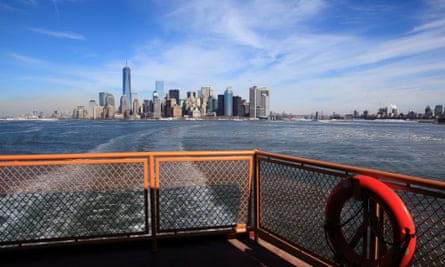
The Staten Island ferry shuttles 75,000 people a day, between bustling, happening Manhattan and the rather more sedate Staten Island. The huge orange boats are featured as insiders’ tips in many a New York City guidebook but are also a method of commuting for around 53,000 Staten Island residents each day. The service runs 24 hours a day, 365 days a year and the ferries (there are eight) take 25 minutes to cross Upper New York Bay. In doing so they offer some of the best views in the city. The skyscrapers of Lower Manhattan occupy the view until the Empire State Building, all the way in Midtown, rises up to take pride of place. Soon after that, tourists’ cameras swing to the left as the ferry passes the Statue of Liberty. The best thing about the Staten Island ferry? It’s free.
siferry.com
Adam Gabbatt
River journeys from Iquitos, Peru
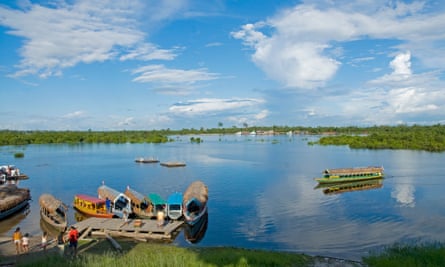
Iquitos is considered the world’s largest metropolis without road or rail access; it’s also Peru’s fifth-largest city and home to a crammed-in population of 400,000 people amid the Amazon rainforest. So, with that in mind, how do people get in or out? The simple answer is daily flights to and from Lima, but if you’re feeling adventurous and want to mix with the locals, you can take one of the lanchas (motor boats) that slowly ply up and down the Amazon and its tributaries.
The main destinations that connect to the rest of Peru are Yurimaguas and Pucallpa, both big urban centres increasingly popular with visitors. To Yurimaguas the journey takes about 2.5 days, and to Pucallpa it’s four. Another option is to go down the main trunk of the river Amazon to Tabatinga in Brazil (about 2.5 days) or, more adventurous still, up the river Napo to Ecuador (at least five days).
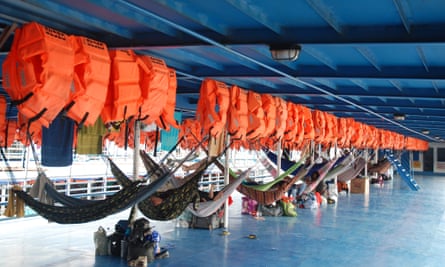
A few cabins are available, but most people sleep wherever they can sling their hammocks (make sure you know how to secure yours). All lanchas leave from quays close to the centre of Iquitos, and three daily meals are included in the prices.
Lanchas leave Iquitos for Yurimaguas and Pucallpa three times a week and cost roughly £20. There are daily departures to Tabatinga from about £17. There are twice-monthly departures to Ecuador costing about £17
David Hill
Border crossing, Costa Rica
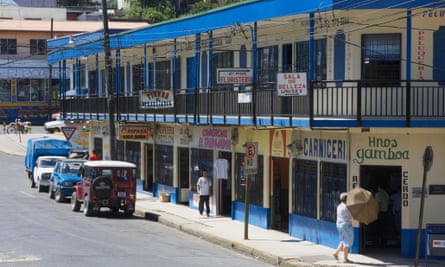
You can get a tour to see everything in Costa Rica – except the old, sleepy, dreamy country it was before the tourist boom started in the late 1990s and Ticos made an effort to smarten things up for their influx of sophisticated visitors. However, local buses can take you through nowhere-in-particular settlements of wooden houses painted turquoise and wreathed in orchids, where life is slow. Those journeys were among the highlights of my years living there, the barely tuned-in salsa surging out over ancient engine noise and the driver’s rosary bashing the cracked windscreen as we jolted over iron bridges and dirt roads, stopping now and again to let a sloth cross. So, on trips to Panama, time allowing, I’d take the bus - not down the Caribbean coast to the border crossing at Sixaola, nor down the Pacific side to Paso Canoas, but down the middle, to a little-used third option, Sabalito. Travelling south from San José, I’d hop off at the misty southern mountain town of San Vito, and wait with farmers in rubber boots and cowboy hats, and woman in spray-on lycra and heels, for the old American school bus, and a gem of a ride through one of the few bits of Costa Rica that can’t be described as Florida with monkeys.
In Sabalito there’s a building with a flag and an amicable official with gun and typewriter who’ll point you towards Río Sereno on the Panama side. You stroll alone to Panama (where as any Costa Rican will tell you, it’s a lot hotter) and pick up the connection, squeezing in with indigenous Ngöbe–Buglé people taking stuff to market for a white-knuckle ride in a minibus, or chiva. The driver, in cheap shades and playing music full-blast, will take you through mist, under rainbows, over mountains, past coffee plantations, flower farms and haciendas, the towns of Volcán and Concepcion, and back to a rougher world, the town of David – the hub for all onward journeys.
San Vito to Sabalito takes around 20 minutes, Rio Sereno to David around two hours
Sorrel Downer
Riding Hong Kong’s elevators
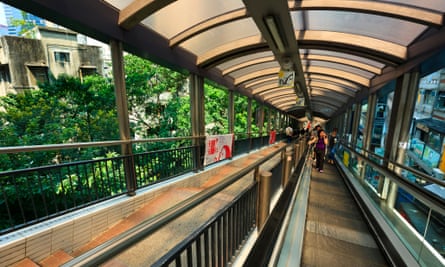
Taking an escalator is hardly a novelty in most cities but in Hong Kong one escalator ride forms a key part of the overall experience. It is the world’s longest covered escalator, which goes all the way through the steep hillsides of the Central and Mid-Levels areas, a journey of more than 800 metres, ascending (or descending) 135 metres through some of the most densely populated and liveliest parts of the city. The ride is a great way of watching the world go by, as you glide past many of the city’s top bars and restaurants. In the early evening you’ll be surrounded by the young professionals who, after a long working day, head out to the city’s bars and restaurants to unwind.
Completed in 1993 and made up of 20 sections, the whole ride takes around 20 minutes, but can be made quicker by walking. The escalators only run in one direction at a time. From 6am-10am they run downhill before switching uphill until closing at midnight. If you mistime it you are in for a gruelling walk through some of the steepest streets in the city.
Kit Gillet
Communal taxis in Dakar, Senegal
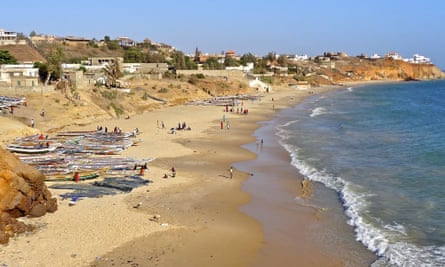
From Senegal’s capital, Dakar, far-flung coastal villages can be reached for a weekend getaway in communal seven-seater taxis across Senegal, called sept places (seven seats) in the French-speaking West African country. Peugeot 505s built in the 1980s are used by most people to cross the country at minimal cost. Like with most vehicles in Senegal, the windshields or doors are decorated with stickers of the faces of Sufi and Muslim leaders. The beat-up cars sit in the sun at the Beaux Maraîchers bus/taxi station in the Dakar suburb of Pikine, which was opened across from the fish market in the summer of 2014 to help reduce traffic in central Dakar.

Meandering between the lines of cars, there are continual wafts of coffee, diesel, fish and hot tarmac. Drivers resting on benches break off from sipping small cups of café touba, a strong peppery coffee, to direct you. Young hawkers in low-slung jeans and oversized baseball caps try to sell everything from dried biscuits to electrical goods. Once you’re settled on the worn-out upholstery, your travelling companions nestling in with you, the road trip begins. The small fishing village of Toubab Dialaw is about an hour’s drive away to the south. It has a dance school and long beaches: both ideal for stretching your legs after the journey.
Emmanuelle Landais
Auto rickshaws in Kigoma, Tanzania
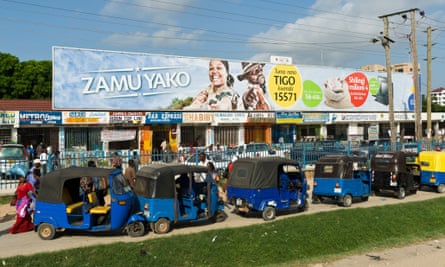
On the north-eastern shore of Lake Tanganyika, Kigoma is a tropical town with a taste for colour. From its hand-painted fishing boats and shopfronts to its roadside stalls stacked with plastic homewares, florid textiles and luscious fruit, everything dazzles. Women dress as brightly as birds, with Swahili kangas or batik kitenges wrapped around their waists. So it’s fitting that the latest mode of transport, the open-sided auto rickshaw, is wildly colourful too. You’ll see red, yellow and blue ones, customised by their proud owners, with jazzy fabrics flung over the seats.
Known here as Bajaji after their Indian manufacturer, Bajaj, auto rickshaws first appeared in Tanzanian towns in 2010. Cheaper than regular taxis and safer than boda-bodas (motorbike taxis), they’re perfect for short hops. Once you’re tucked in the back, you’re shielded from the sun and rain, but can feel the breeze and soak up the sights and sounds of urban life. In Kigoma, where russet-coloured earth roads are more common than tarmac, you have to steel yourself for a bumpy ride. But for the quick trip from your guesthouse to the lakeshore for a boat to Gombe Stream national park, there’s no better way to travel.
Emma Gregg
The Blue Train, Sweden
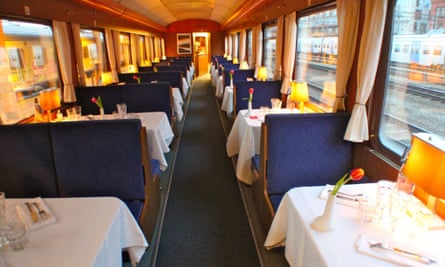
Trust the design-conscious Swedes to come up with an affordable, stylish alternative to the boring old commute. The Blue Train, which began operating between Gothenburg and Stockholm in 2010, is made up of 1960s carriages, with a wood-panelled interior, white curtains and art deco-inspired lampshades that lend a refined atmosphere you don’t get on the intercity. The train takes four hours, about 45 minutes longer than the more frequent intercity, so there is plenty of time for a leisurely sit-down meal, which is served on tables covered in white linen and brightened with fresh flowers. The set menu (at £30, main meal from £15) includes a shrimp cocktail, corn-fed chicken and a classic creme brulee for dessert, cooked by chefs in the onboard kitchen, and paired with a choice of wines. After dinner you can retire to the piano bar (complete with full-size piano) with a glass (note the glass, not a paper or plastic cup) of champagne, £10, as the Swedish countryside whooshes by.
Tickets from £30 one-way, Blataget.com. Travels between Stockholm and Gothenburg once a day, five days a week
Jonna Dagliden
Funicular de Vallvidrera, Barcelona, Spain
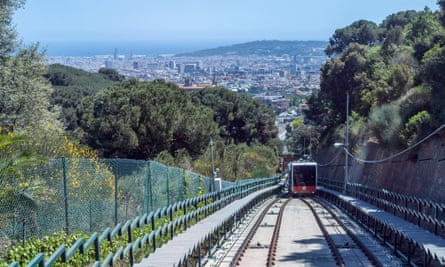
The daily commute is already a grind; and then comes summer. But there are some commuters I almost envy: the lucky few who use the Funicular de Vallvidrera. Barcelona’s rich have always tried to escape the poverty, heat and smell of the medieval city by heading for the nearby hills. The pretty little town of Vallvidrera took shape in the 19th century and the 730-metre funicular was built in 1906.
Morning commuters spill out of the dinky carriage at the base of the hill and are replaced by young South American women working in Vallvidrera for moneyed old ladies. Later, squealing schoolchildren jostle for space with middle-aged men in lycra wielding carbon-fibre bicycles. The views across the city are spectacular. Go all the way to the beautiful modernisme station at the top and explore the town (Casa Trampa does a fantastic three-course set lunch for €9.50) or get off halfway for the Carretera de les Aigües, a wonderful walking and cycling route through the Collserola hills.
Take the S1 or S2 line from Plaça de Catalunya to Peu del Funicular. A zone 1 ticket covers the whole journey and costs €2.15
Richard Eilers
Calmac ferries, Scotland, UK
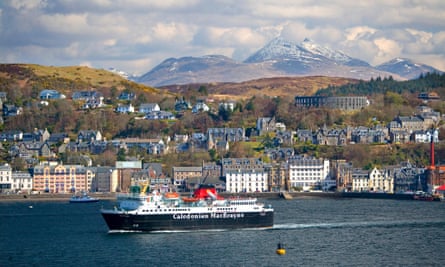

Comments (…)
Sign in or create your Guardian account to join the discussion